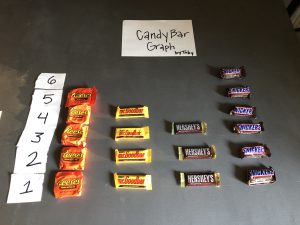
An act of expressing your appreciation through a few words, a thank you note, is an important way to show your gratitude for someone and their time. In this mini spark you will learn about the basics and create a thank you note for Veteran’s Day.
Spark your thinking!
1. Set up your language arts mini spark recording page: #52: Thank You Notes
2. Veteran’s Day is November 11th, visit this website to learn more about the history of Veterans Day. Record 5 details about the history of veteran’s day to your recording page.
3. Learn the basics of writing a thank you note. Write each bold prase on your recording page as you read step 3.
Greeting. Don’t forget to make sure you’re using the correct form and spelling of the person’s name. Put a comma after the greeting.
- Dear Aunt Sharon and Uncle Bob,
Express your thanks. Begin with the two most important words: Thank you.
- Thank you so much for…
- It made my day when I opened…
- I’m so grateful you were there when…
Add specific details. Tell them how you plan to use or display their gift. It shows them that you really appreciate the thought that went into it. Even if it’s cold hard cash, describe how you’ll spend the stuff.
- Here’s a picture of me with my new briefcase. I look so professional!
- I can’t wait to use the birthday money you sent to decorate my dorm room.
- The going-away party meant so much to me. Having all my friends and family in one place was something I’ll never forget.
Look ahead. Mention the next time you might see them, or just let them know you’re thinking of them.
- We look forward to seeing you next month at Lucy’s party.
Restate your thanks. Add details to thank them in a different way.
- Again, thank you for your generosity. I’m so excited about college. I’ll let you know all about it when I get settled.
- We felt so blessed that you made the trip to be with us on our wedding day. We can’t wait to see you again soon!
End with your regards. “Sincerely” is a safe standby, but for closer relationships, you might choose a warmer option.
- With love,
- Many thanks,
- Yours truly,
4. Read over this graphic about writing thank you notes. Write 3-5 reminders on your recording page.
5. Try it! On your recording page, use the steps from #3 and write a thank you note. You can write a pretend note to a fictional person or you can write one to someone who you would like to thank for helping you.
6. OPTIONAL: Use this template or use your recording page to write a thank you note to a Veteran. If you do not personally know a veteran, you can write a general thank you to all Veterans.
7. Share your language arts mini spark recording page and your thank you note with your teacher/EY coordinator.
Source: https://ideas.hallmark.com/articles/thank-you-ideas/how-to-write-a-thank-you-note/
 What inventions need to be invented? How about a bed-Making Machine: A fun machine that automatically makes your bed for you! Maybe a Spaghetti Twirling Fork: A rotating fork that helps you twirl spaghetti perfectly for a delicious meal. In this mini spark you will learn about some new inventions that were launched in 2023.
What inventions need to be invented? How about a bed-Making Machine: A fun machine that automatically makes your bed for you! Maybe a Spaghetti Twirling Fork: A rotating fork that helps you twirl spaghetti perfectly for a delicious meal. In this mini spark you will learn about some new inventions that were launched in 2023.



 Are you ready for a fun PAPER PLATE building challenge? Grab a paper plate, scissors and tape, and let’s get started! With just these three materials, you can create amazing structures.
Are you ready for a fun PAPER PLATE building challenge? Grab a paper plate, scissors and tape, and let’s get started! With just these three materials, you can create amazing structures.



 STEAM Day is an opportunity to focus on helping kids advance in the fields of
STEAM Day is an opportunity to focus on helping kids advance in the fields of 


